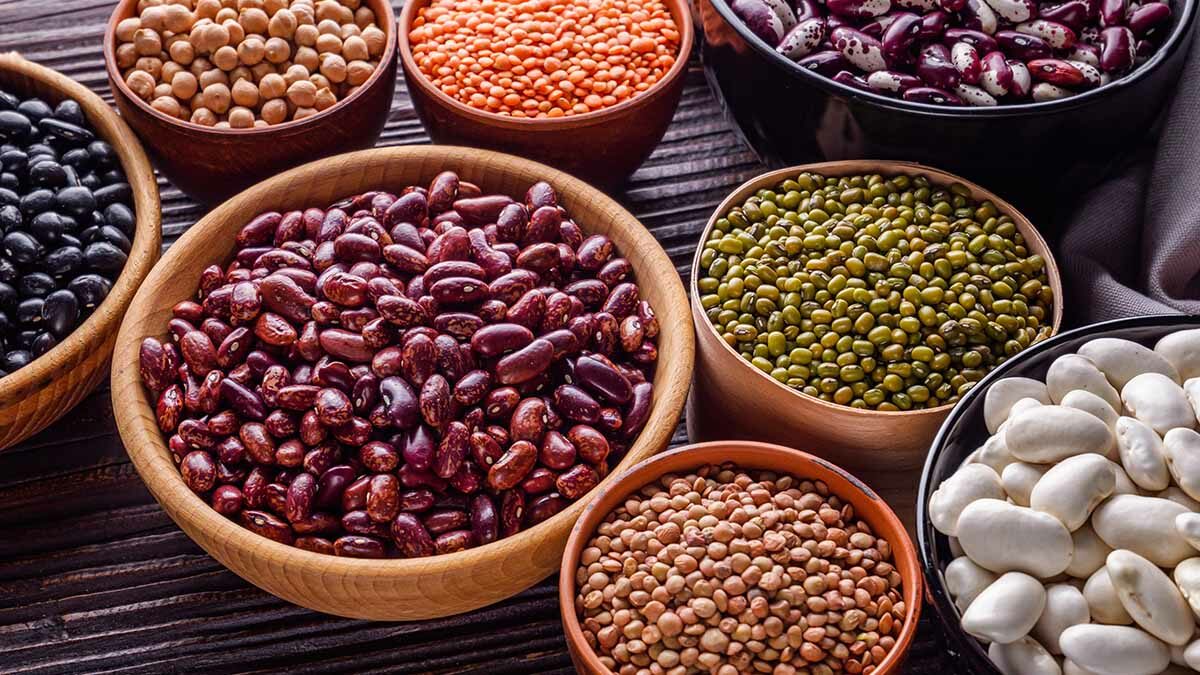We’ve known for decades that beans have an exceptionally low glycemic index. You give someone cooked beans, peas, or lentils and they don’t even get half the blood sugar spike that they would get with the same amount of carbs in the form of bread, pasta, or potatoes. So if you’re going to eat some high glycemic food like white rice, consider having some beans with it, and the more beans the better. If you check out my 3-min video Beans and the Second Meal Effect, you can see that as the subjects’ bean to rice ratio increases, cardiometabolic risk factors continually improve. Substituting one serving of beans for one serving of white rice was associated with a 35 percent lower risk of metabolic syndrome (pre-diabetes).
Why do beans have such a low glycemic index? Maybe it’s because they’ve got so much fiber that absorption is just slower or something? It was this study that blew everyone’s minds.
It started about as expected. Give people bread for breakfast, and they get big spikes in blood sugar and insulin levels, but give the same amount of carbs in lentil form and you blunt the effect. (Lentils for breakfast? Well, the Brits like baked beans on their toast, but I’ve started using a handful of sprouted lentils in my breakfast smoothie. See A Better Breakfast and Antioxidants Sprouting Up). What they did different, though, was follow through to lunch.
For lunch both groups got the same meal; they both got bread. Those that had lentils for breakfast, though, had less of a glycemic reaction to the bread. At the time they called it the “lentil effect,” but subsequent studies found chickpeas appear to work just as well. It has since been dubbed the “second meal effect.” Eat lentils for dinner, and then for breakfast, even if forced to drink sugar water, we have better glycemic control. Beans moderate your blood sugar not just at the meal we eat them, but even hours later or the next day.
How is that even possible? The mystery has since been solved. Remember what our gazillions of gut bacteria do with fiber? They produce compounds like propionate with it (see Fawning Over Flora and Boosting Good Bacteria in the Colon Without Probiotics) that get absorbed into our system and slow down gastric emptying—the rate at which food leaves our stomach—so we don’t get as much of a sugar rush. It’s like symbiosis. We feed our good bacteria and they feed us back. So, we have a bean burrito for supper and by the next morning it’s time for our gut bacteria to eat that same burrito and the by-products they create may affect how our breakfast is digested.
Researchers figured this out by giving people rectal infusions of the amount of propionate your good bacteria might make from a good burrito, and the stomach relaxes within minutes. I guess if you forgot to eat any kind of beans for supper and need to blunt the effect of your breakfast doughnut, it’s theoretically not too late—but in general I encourage people to administer their food orally.
What about the gas? Check out my blog post Beans and Gas: Clearing the Air.
Which beans are most antioxidant packed? See The Best Bean and The Healthiest Lentil (hint: skip the jelly variety). Which lower cholesterol the most? See Soy Worth a Hill of Beans?
What other superpowers do beans posses? They are packed with potassium (Preventing Strokes with Diet), mad with magnesium (Mineral of the Year—Magnesium), and a preferred source of protein (Plant Protein Preferable). They improve breast cancer survival (Breast Cancer Survival and Soy), delay premature puberty (The Effect of Soy on Precocious Puberty), and they’re a great bargain to boot (Eating Healthy on a Budget).
-Michael Greger, M.D.
PS: If you haven’t yet, you can subscribe to my videos for free by clicking here and watch my full 2012 – 2015 presentations Uprooting the Leading Causes of Death, More than an Apple a Day, From Table to Able, and Food as Medicine.
